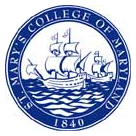St. Mary's College of Maryland, established in 1840, is a public liberal arts honors college situated in St. Mary's City, Maryland. As Maryland's public honors college, it is one of only two such institutions in the nation, offering students a picturesque campus nestled on the St. Mary's River. The college enrolls approximately 1,500 students, fostering an intimate educational environment with a student-faculty ratio that promotes personal attention and mentorship.
St. Mary's College of Maryland distinguishes itself with a commitment to an honors college experience accessible to a broad spectrum of students. The college operates under a unique public honors model, providing an education traditionally associated with elite private colleges. Notably, its River Concert Series, an annual music event, exemplifies how the college integrates with the community while also providing students with practical learning experiences in event management and production. Additionally, the college's Center for the Study of Democracy fosters a distinctive learning environment through its emphasis on civic engagement and public policy, further strengthened by its proximity to historic sites in St. Mary's City.
Celebrating its academic excellence, St. Mary's College of Maryland boasts numerous accolades, including consistently high rankings among public liberal arts colleges in the nation. Its devoted alumni network and strong support system contribute to the exceptional undergraduate research opportunities, study abroad programs, and internship placements that help pave the way for post-graduation success. The college has also made significant strides in sustainable practices, featuring an award-winning sustainability plan that not only reduces the college's environmental footprint but also serves as a learning tool for students.
Despite its many strengths, St. Mary's College of Maryland faces challenges like any other institution. While it prides itself on being an affordable honors college, some students may find the cost prohibitive without financial aid, which the college works diligently to provide. Moreover, its rural location, while a draw for some, may limit cultural and recreational opportunities for others used to a more urban environment and could affect student recruitment from diverse geographical regions. The college continuously endeavors to enhance its appeal to a wider audience, both in terms of student body diversity and in breadth of opportunities outside the classroom.



